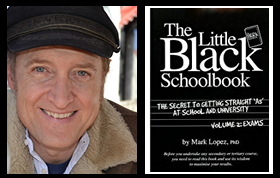Dr Mark’s The Meaning in a Nutshell
Najaf Mazari and Robert Hillman, The Rugmaker of Mazar-e-Sharif (2008)
This autobiography of an Afghan refugee who settled in Melbourne, Australia, The Rugmaker of Mazar-e-Sharif (2008) is by Najaf Mazari who was assisted by the professional writer Robert Hillman. Reflecting the social justice principles of pacifist political activists and refugee advocacy groups, the book is intended to influence government and public opinion to end the policy of keeping asylum seekers, who arrive unauthorised by boat, in detention centres. It advocates that the government and people of Australia welcome all refugees into the community who seek safety and a new life. Intended by the publishers to tell a story that ‘reaches into our hearts and consciences’, it serves to confirm the beliefs of those who advocate on behalf of asylum seekers and to systematically counter the criticisms and concerns expressed by those on the Right.
The text depicts the detention centres as prisons for innocent people, as cruel places that inflict suffering on those who have already suffered greatly. This sense of injustice is compounded by the depiction in the text of Najaf Mazari, and by implication other refugees, as ideal settlers who are self-reliant, hardworking, optimistic, willing to pay taxes rather than receive welfare, grateful to be in Australia, as well as aspiring to live in peace, own a home and a car, educate their children and achieve upward social mobility. With many in Australia being concerned about aspects of Islam, such as the subordination of women, the text attributes these excesses to fundamentalists like the Taliban. Instead the text argues that Islamic attitudes to women, and other Islamic beliefs of concern to many Australians, are actually moderate and compatible with Australian traditions of sectarianism and religious tolerance.
With detainees expected to wait a long time in uncertainty while their fate is decided by faceless bureaucrats, the texts sympathetically explains why some asylum seekers felt the need to lie to officials, or end up fighting, or rioting, or resorting to bizarre protests like sewing their lips together. It also explains that they had no choice but to deal with people smugglers because there was ‘no queue’ for them to ‘jump’, and that they left their homeland reluctantly. They also miss their wives and family who were left behind and they seek to reunite with them in Australia as soon as possible. Importantly, these people should not be sent back to their homelands since many of them would be in mortal danger, having fled war or genocide. They are innocent victims of political and military struggles not of their own choosing and outside of their control. Moreover, they faced perilous journeys to get to Australia, which is, in itself, another reason to accept and welcome them.
The text celebrates multiculturalism and deals with multicultural issues when it deals with settlement issues, depicting what it is like to be a refugee in a strange land and the challenges faced in negotiating cultural and religious differences. Meanwhile, this Afghan refugee is presented as enriching Australian cultural diversity by bringing to this country his traditional sense of honour and honesty, his appreciation of traditional wisdom like herbal medicines, and, most of all, his rugmaking knowledge and skills that enable him to produce and import these beautiful creations that are prized possessions in many Australian homes. In addition, those Australians who support refugees and help them settle successfully are celebrated as good people and role models.
Student resources by Dr Mark Lopez
© Mark Lopez 2021 All RIGHTS RESERVED
The purpose of the concise notes of Dr Mark’s The Meaning in a Nutshell is to provide much needed help to students seeking to unlock the meaning of the texts with which they have to deal. (More elaborate notes are provided in lessons as part of my private tutoring business.)
Subject: The Rugmaker of Mazar-e-Sharif meaning, The Rugmaker of Mazar-e-Sharif themes, The Rugmaker of Mazar-e-Sharif analysis, The Rugmaker of Mazar-e-Sharif notes
